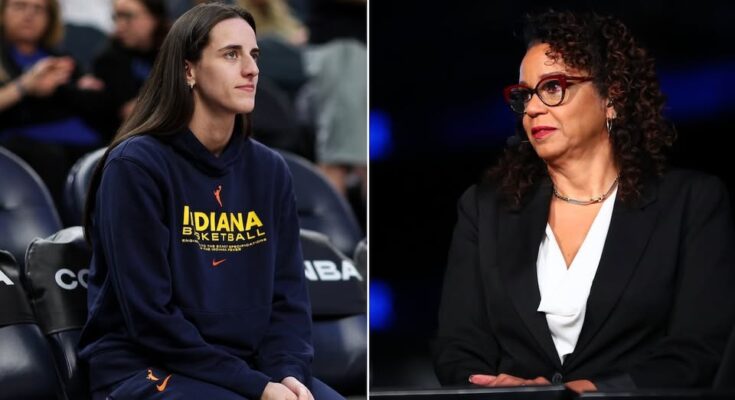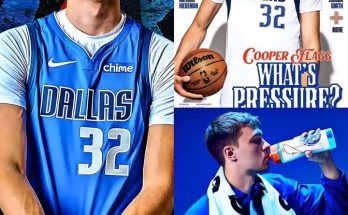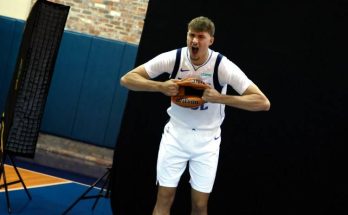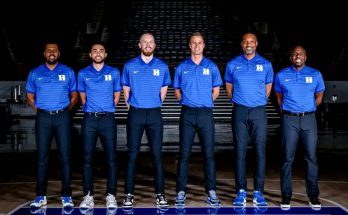A contentious statement from an ESPN expert, claiming the Indiana Fever were “more dangerous” in Caitlin Clark’s absence due to injury, has ignited a fierce backlash across the WNBA community, sports media, and among fans.1 This highly criticized assertion, made amidst Clark’s impressive but injury-interrupted 2025 sophomore season, has fueled debates about player value, team dynamics, and the often-polarizing nature of sports commentary.2
The identity of the specific ESPN expert who made this provocative claim has not been definitively identified in widespread public reports (as of early July 2025). However, the sentiment itself is not entirely new in sports analysis. It often arises when a team’s star player, known for high-volume scoring or a ball-dominant style, is sidelined. The argument, however flawed in this instance, typically posits that without the gravitational pull of a primary scorer, other players might step up, ball movement could improve, or a more balanced offensive attack might emerge. In short, the team becomes “less predictable” or “more diverse” in its scoring options.
Caitlin Clark’s 2025 WNBA season has been a continuation of her electrifying rookie year, albeit with the added challenge of injuries. After a groundbreaking rookie season in 2024 where she won Rookie of the Year and earned All-WNBA First Team honors, Clark has continued to be a statistical marvel in her second year. Despite missing seven games due to injuries (a strained quadriceps in May and a strained groin in late June/early July), she is reportedly averaging 18.2 points, 8.9 assists, and 5.1 rebounds per game. Her playmaking ability has been a consistent highlight, and she quickly became the fastest player in WNBA history to reach 200 points and 50 assists.
The Indiana Fever, a team that has been strategically “retooled” around Clark with veteran additions like DeWanna Bonner (though Bonner’s recent rumored split with the Fever adds another layer of complexity) and Natasha Howard, has shown resilience. As of early July 2025, the Fever’s record stands at 8-8 in the standings, a testament to their ability to compete even when their primary star has been sidelined.
The ESPN expert’s claim that the Fever are “more dangerous” without Clark, particularly given her statistical contributions and the team’s record with and without her, immediately sparked outrage.
- Statistical Contradiction: Clark’s individual statistics clearly demonstrate her immense value. Averaging nearly 19 points and 9 assists, she is directly responsible for a vast portion of the Fever’s offensive production. To suggest the team is “more dangerous” without such a prolific scorer and playmaker defies basic statistical logic. While other players might see an uptick in their individual numbers in her absence, it’s highly improbable that the team’s overall offensive efficiency or scoring output would improve to make them “more dangerous” against top-tier WNBA defenses.
- Team Dynamics: Basketball is a team sport, and chemistry is crucial. While a star player can sometimes dominate the ball, Clark’s passing prowess and ability to draw double-teams often create opportunities for her teammates. Her presence opens up the floor, making other players more dangerous. Without her, defenses can concentrate more on the remaining offensive threats, potentially making the team less dangerous overall.
- The “Optics” of the Statement: Perhaps most damaging was the perception of the statement. It came across as dismissive of Clark’s talent and the hard work she puts in. For a league that has seen unprecedented growth due to Clark’s popularity, a leading voice from a major broadcaster questioning her value, especially during an injury absence, struck many as tone-deaf and disrespectful. It also inadvertently fueled narratives that downplay the significant contributions she has made to the WNBA’s viewership and economic success.
- Fan Reaction: Fans, who have passionately embraced Clark and the WNBA’s surge in popularity, reacted swiftly and vociferously. Social media platforms were flooded with criticism, accusing the expert of sensationalism, lacking understanding of basketball dynamics, or simply trying to generate controversy. Many pointed to the fact that the Fever’s record is directly correlated with Clark’s presence and production.
- Impact on the Player: Such comments, even if not directly malicious, can be disheartening for an athlete. Clark has navigated intense scrutiny since college, and to have her impact questioned during an injury absence, particularly from a major media outlet, adds an unnecessary layer of pressure.
- Undermining a Star: In any sport, stars drive interest. In the WNBA, Clark is a generational talent who has brought millions of new eyes to the league. Comments that appear to undermine her value or suggest the league is better off without its biggest draw are counterproductive to the growth and narrative of the sport.
- Simplifying Complexities: Team dynamics are complex. While a ball-dominant player can, in theory, sometimes slow ball movement, Clark’s ability to facilitate and create shots for others is undeniable. Reducing a team’s effectiveness to a simplistic “better without the star” narrative ignores the intricacies of high-level basketball.
- Fuelling Negative Narratives: The WNBA has faced historical struggles for mainstream attention. Clark has helped break through those barriers. Comments that create internal friction or detract from the positive stories emerging around the league can inadvertently feed into negative stereotypes or undermine its progress.
- Lack of Empathy: Making such a claim when a player is out with an injury can also be seen as lacking empathy. An injured player is already dealing with physical recovery and the mental frustration of being sidelined. To then suggest their absence makes the team “more dangerous” can feel like an unnecessary jab.
ESPN has been a long-standing partner and broadcaster for the WNBA.3 Their analysts play a crucial role in shaping public perception and providing insight. Prominent ESPN WNBA analysts include Rebecca Lobo, Andraya Carter, Carolyn Peck, Monica McNutt, and LaChina Robinson, among others.4 While robust debate and differing opinions are a hallmark of sports commentary, there’s often a fine line between provocative analysis and statements that appear to undermine the very athletes or leagues they cover.
The backlash against the unnamed expert underscores the passionate investment of the WNBA’s growing fanbase and their protective stance towards their stars. It serves as a reminder to analysts that while generating conversation is part of the job, accuracy, context, and a keen awareness of the broader implications of their statements are equally, if not more, important.
In the end, Caitlin Clark’s impact is quantifiable and undeniable. The Fever’s record with her (and their overall increase in viewership and merchandise sales) speaks volumes. To suggest they are “more dangerous” without her flies in the face of both statistical evidence and the very palpable “Clark effect” that has transformed the WNBA. The criticism against the ESPN expert was not just about a single comment; it was a loud repudiation of a narrative that many feel fundamentally misunderstands the value of a generational talent.



